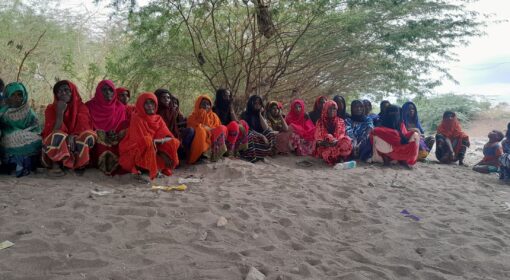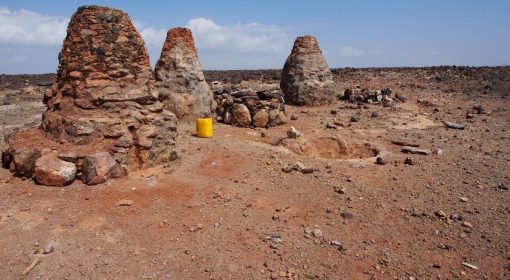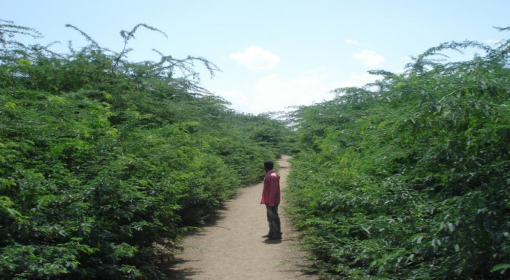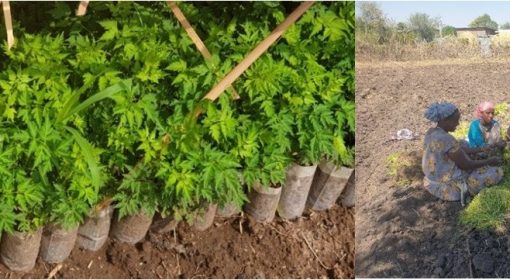By APDA
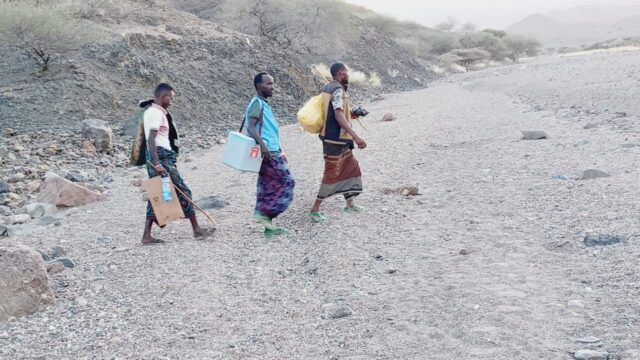
Drought is deep and deepening
The Afar Pastoralist Development Association (Qafar Dacarsittoh Dadalih Egla) or in short, APDA, is working for more than 30 years in the arid lowland Afar Region of Ethiopia.
Barring some communities on the western border where rain fell in brief storms, the vast hinterland of Afar this year is bone-dry and thirsty. The current short rains of March to April are extremely sparse and with no wind-direction indicating rain, the next rains are unlikely before late July/ August, scoring 11 months without rain. Going a round trip of 490 kilometers twice daily into Kori the dry central heart of the Region, APDA is struggling to prevent 63,000 people from thirst as well, the consequences of highly contaminated water each household struggles to collect with pack animals walking up to 3 day journeys. This APDA does by fueling a government-owned 25,000-liter truck rather than hiring which would cost 4 times the amount.
Now with the clammer of more desperately thirsty people, the organization is seconding a 2nd truck going in another direction into for a further 29,000 people in northern Dubte. At this stage, there are no other responders and if a day goes without the delivery, then death of the most vulnerable first can occur as children wait in the home for up to 3 days for their mother to bring as much turbid water as she and the donkey/ camel can carry…
Fear of animal death – the key asset
Next to thirst is the fear animals will die, in the struggle to find pasture. For this and the water, clan leaders are directing people to move barring the increasing restrictions of land covered by the invading weed shrub, prosopis juliafora. A call from Eli Da’ar adjacent to the Eritrea border today is pleading for both animal feed and veterinary medicines and emaciated animals have begun dropping.
Further south in Kilaalu, Yanguddi and Sibeebi – 3 adjoining districts – an apparently new camel disease is taking its toll. With the recent help of veterinarians from UEA, the disease is identified and APDA has sent what medicines it has to try to halt the death of these highly valued animals. More medicine is urgently needed.
Parallel with the 10 grazing areas APDA has identified with high malnutrition – pregnant/ lactating mother malnutrition has spiked to around 63% in the most remote areas – animal feed is now desperately needed to prevent animal deaths particularly from pasteurolosis, the disease connected with weight loss in all animal types. This is a highly contagious disease capable of killing an entire herd in a short time. While APDA now has the animal feed production plant, production is underway at the first launching stage. Back-up is urgently needed in order to produce the amount needed to save the remaining few animals in an estimated 5,000 households from dying – to do this, 540,000 kg needs to be produced in the next 10 days to 2 weeks and transported to the affected areas. As previously mentioned, the medium – term aim is to level off and produce animal feed that all households use it to prevent the crisis we are currently in, constantly feeding milking and breeding animals, paying for the feed at cost-price, the production plant also producing revenue selling animal feed to commercial outlets, funds generated ploughed back into preserving livelihoods.
Market multiplies misery
Food costs rise in local markets as malnutrition tightens its grip: as of today food is transported with 20% inflation on the cost 1 month ago to the distant areas where suffering is amplified – in the central market, wheat flour is increased by 800 ETB to 9,200 ETB for 100 kilograms, the same amount selling at 11,040 ETB in the distant markets. Sugar price has jumped another 25 ETB per kilogram in 2 weeks to 145 ETB, the central inflation rate being around 17%. With fuel now costing 104.40ETB/ liter and planned to reach around 250 ETB, the drive on inflation is not lifting.
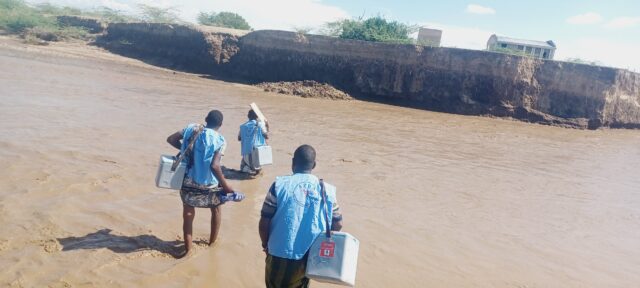
Superchallenge of mobility
As the humanitarian world reels under bilateral aid cuts, APDA has its own peculiar challenge: Afar people have some of the worst health, education and economic parameters in Ethiopia since the means to deliver them services remains that of sedentary village communities.
Unlike and more than other livelihoods in Ethiopia, Afar are nomadic across their vast land. Around 90% of the Afar population have lived in harmony with their landscape over thousands of years, moving to allow the regeneration of water and grazing resources in a normally frugal environment. Under drought, moving is coping, the land’s resources shared by all.
Without road development/ unable to construct a road through the ancient lava flows leaves vast sways of the Region (around 65%) and around 45% populations well out of reach of the sedentary population mode of administration and service. According to the government, 81% of all mothers deliver their baby in their mobile home or daboyta while in highly isolated areas, this is all but 100%. The walk to the closest clinic maybe up to 10 days away but most definitely a day or so.
These are the communities APDA developed a model of service mobility to reach: now bringing health care to around 700,000 people and currently having over 14,000 literacy and alternative basic education students in learning. Most of the Region’s 42 rural districts have one or more subdistricts without road access or very partial access and no infrastructure. Mapping this with the government, APDA walks house-to-house through these communities identified as ‘hard-to-reach’ treating, checking pregnant mothers, vaccinating with a mobile cold chain, building awareness on disease prevention and, in collaborative programs, providing basic education while supporting change to female rights. As reported now, Waytale and Gafura in Mille district have measles and whooping cough. From their homes, these mothers must walk around 9 hours to Mille town to get their children vaccinated. Thus, these people rely on APDA to meet basic health needs. Again, under current conditions of drought, the child may well slip into malnutrition and through fever and vomiting die – despite the mother’s interest and demand for the vaccination. The APDA health worker needs act to avert the worst outcome with urgency.
Indeed, through 31 years of intervention using cultural entry points, APDA has modeled into the community the understanding of safe maternal health; the need for vaccination; community acceptance of women and girls as income earners; the understanding that traditional practices causing harm must stop including and particularly female genital mutilation as well as enabling the written use of the language using that as a vehicle of change. Rural learning through APDA has gone on to produce medical, engineering and leadership experts for the Region as well as a high number of the government – employed Afar teachers having their beginning with the APDA program.
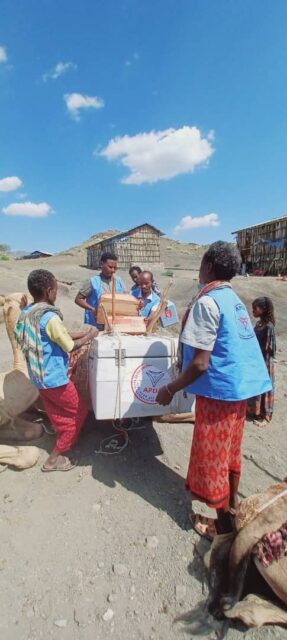
APDA links its program to the government institutions referring to health centers for higher health and maternal health care as well as running hostels in towns so that students from far – flung places can complete school to grade 12. However, the ground level taking into full consideration cultural values is needed. By this means, within APDA’s maternal health program maternal death rate is comparable with a city like Addis Ababa having dropped from being one of the highest imaginable in the world 20 years ago. This was through training traditional birth attendants to stop 6 traditions used in the birthing process that kill and maim mother and baby.
Women extension workers provide a social work – type service house to house enabling girls and women to have a safer, healthier life as well as promoting their full involvement in the community development process.
To uphold these gains, APDA must continue in such remote communities, not closing the door of opportunity it has opened. IF APDA’s health, education and female social services should stop, the community then have no other alternative but to revert with full dependence to the traditions that served them for good or bad with no reference to change as climate, market and political change are demanding.
In the end, APDA appeals to its government, the donor community and the world as a whole to recognize this need for a third strategy beyond what is already known for urban and peri-urban communities – the need for mobility, for building the human capacity from the ground up and being fully integral to culture and proven traditional ecology and social management.
The actual strategies the organization uses to fight food insecurity; raise literacy and learning; deliver mobile health services and to promote women and youth’s empowerment as well as a plan for sustainability is documented in the organization webpage, www.apda-afar.org. Your interaction on these dynamic issues is highly welcomed.
Afar Pastoralist Development Association
Address: P.O. Box 592, Code 1,110, Addis Ababa, Ethiopia
Office location: Samara, Afar Region – Liaison Office, Tadesse Building, Semmen Masgadga, Addis Gabaya, (near Abissinya Bank) Addis Ababa
Liaison Officers – 251 924231452/ 251 944747477
afarpda@gmail.com web page: www.apda-afar.org;
Facebook address: Afar Pastoralist Development Association (APDA)
YouTube: Afar APDA X: @afarapda
Phone numbers: 251 912840017 – Executive Director; 251 911642575 – Program Coordinator;
251 912725218 – Administrator
